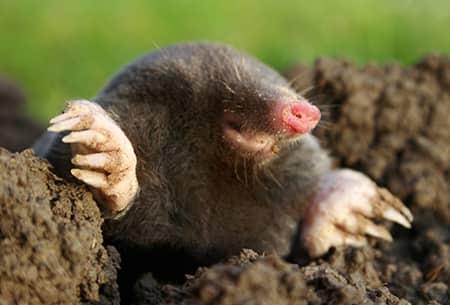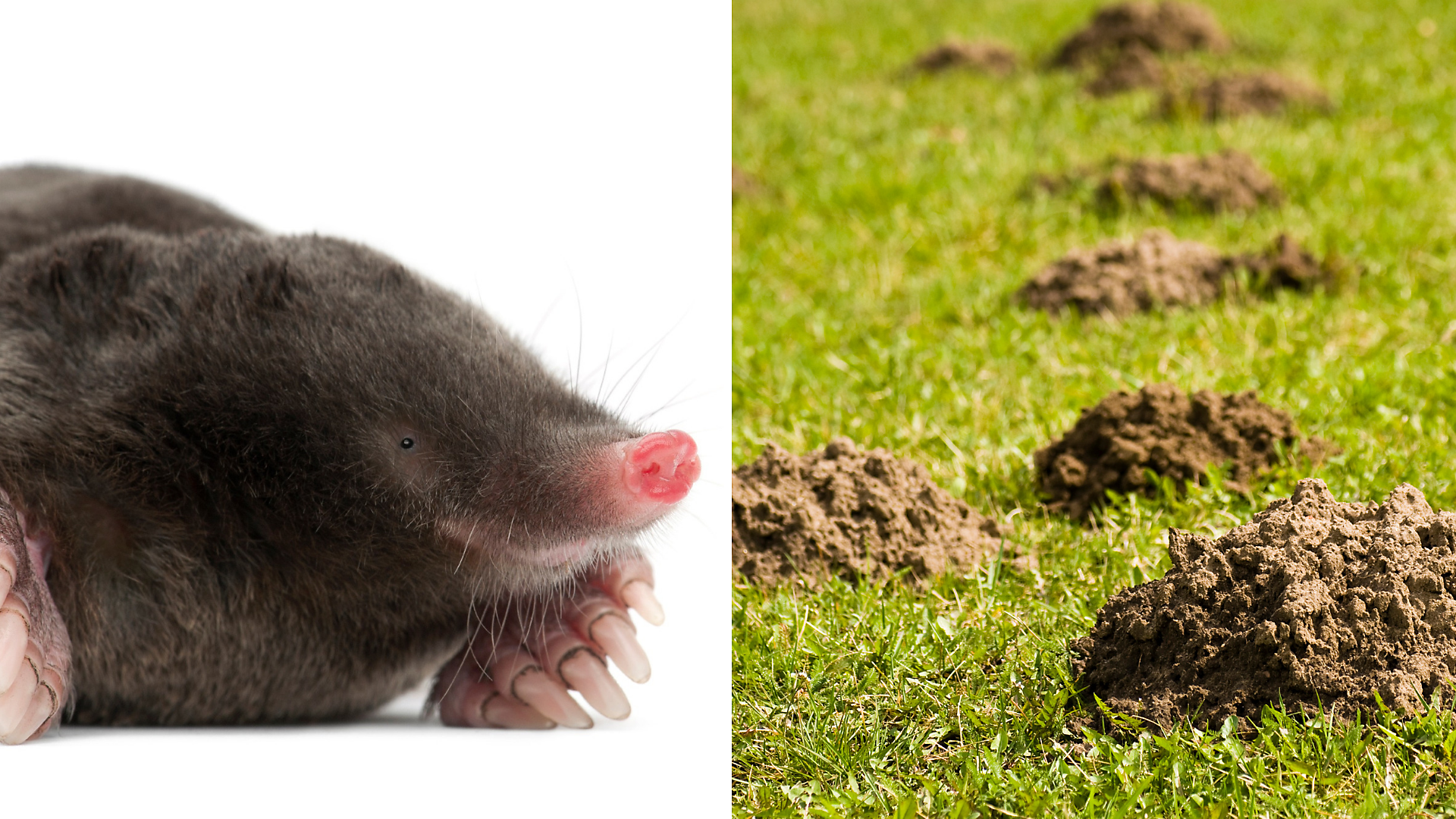Why Do Moles Make Piles Of Dirt
Moles dig blindly through the soil and eat whenever they happen upon food. Moles leave large garish piles of dirt on top of sod burrowing through the layers of soils in search of insects and grubs.

You Ve Probably Heard Tons Of Old Wive S Tales For How To Get Rid Of Moles But There Are Only A Few Tried And True Methods Tha Mole Moles In Yard Mole Tunnels
The soil of the mole mound is finer than that of a gopher mound.

Why do moles make piles of dirt. And in more drastic circumstances plants trees and bushes will start to rot or die because moles have dug through their roots. Moles make a volcano- or cone-shaped mound. Trapping moles can be an effective method of removal if.
Moles make mounds similar to those created by. Mounds of loose soil on the lawn Moles leave piles of soil on the surface because they are pushing them up from below. Most earthworm activity happens in the spring and fall or after a rain.
Moles can also be very difficult to trap because of their time spent underground and their tendency to abandon tunnels after one use. There are no visible holes. Earthworms also create mounds of dirt but there are often no holes associated with their handy work.
Moles rarely come out of their tunnels they poke a hole in the ground and then push the dirt straight. The mounds or mole hills are excess dirt that has been mined away by the mole to create. Why do moles make mounds.
Moles love to dig tunnels and often evidence like small piles of dirt or flowers which have been disrupted are signs there are tunnels underneath them. Their purpose is allow the mole to hunt for its main diet worms. However their tunneling activity generally outweighs any benefits because it disrupts plants roots.
In their search for grubs and earthworms moles can leave a yard littered with holes and dirt hills. During the winter when the earthworms go deeper so do the moles. Because earthworms supply up to 90 percent of the mole diet the rich moist loose soil that earthworms love is their ideal habitat.
They work through the soil in long underground tunnels in search of grubs larva and worms. One notable and highly visible spot that. Traveling tunnels are pathways between feeding areas and the den.
In short moles are born to tunnel. In warm weather the star-nosed mole works about 6 inches or more below the surface and periodically pushes soil up to make an air vent. The soil of the mole mound is finer than that of a gopher mound.
Mole activity is evidenced by 2- to 24-inch volcano-shaped mounds. The short sharp twists and turns are made as the animal searches for food. The least-toxic approach for treatment and prevention of burrowing-animal damage is remove the food source or make the area inhospitable.
They have little function other than that. The holes coming up to the surface are created to push out excess dirt. These are their entrance and exit holes.
In their search for grubs and earthworms moles can leave a yard littered with holes and dirt hills. When we get heavy rains sometimes that can force earthworms that are maybe deeper in the soil levels up to more shallow parts of the soil so it creates an abundant food source for the moles he said. They have a very high metabolism and must eat a lot often an amount of food equal to their body weight each day.
Moles have cylindrical streamlined bodies pointed snouts enormous paddle-shaped front paws and short velvety fur that moves backward or forward as they change direction. Given the extreme quantity of dirt mounds that you describe moles should also be considered. Not to make a mountain out of a mole hill but moles really can do a number on lawns and gardens across Grays Harbor County.
Why Do I Have Moles In My Yard. Moles rarely come out of their tunnels they poke a hole in the ground and then push the dirt straight up. Where there are moles there will be small mounds of conical-shaped dirt protruding from the ground.
The least-toxic approach for treatment and prevention of burrowing-animal damage is remove the food source or make the area inhospitable. Correspondingly do moles make mounds of dirt. If you wake up one summer morning and find that mounds of dirt have popped up all over your lovely lawn the most likely culprit is a burrowing mole or.
There are some things homeowners can do but treating for the grubs wont get rid of the moles. Feeding areas are usually marked by clusters of hills and shallow tunnels.

Get Rid Of Moles Mole Repellent Mole Animals

Moles And Voles Green Lawn Fertilizing

How To Get Rid Of Moles Mole Getting Rid Of Gophers Dates Tree

The Moles In The Yard Solution How To Get Rid Of Moles And Gophers In Your Yard The Fast Easy And Or Garden Pests Moles In Yard Garden Pests Identification

Outlook Office Skype Bing Breaking News And Latest Videos Animals Cool Pictures Of Nature Cute Animals

How To Get Rid Of A Mole Nice And Easy Garden Pest Control Lawn And Garden Garden Pests
Tips For Identifying Moles Voles And Gophers

Get Rid Of Moles Traps Poison And Repellent Mole Garden Pest Control

Meet The Mole Expert Stewart Clark

How To Id And Control Gophers Moles And Voles Infographic Humming Bird Feeders Animal Habitats Pest Control

Moles Mole Garden Pests Animals

Why Pesky Moles And Groundhogs Are Actually Beneficial Http Www Offthegridnews Com 2014 07 12 Why Pesky Moles And Mole Animals Amazing Landscaping Ideas

This Is The Easiest Way T Mole Moles In Yard Weird Animals

Mole Control Home Remedies For Removing Moles From Your Yard Mole Repellent Garden Pests Mole

Prevent Moles From Digging Up Your Yard With These 5 Tips

Why Moles Invade And Destroy Tulsa Yards



Post a Comment for "Why Do Moles Make Piles Of Dirt"